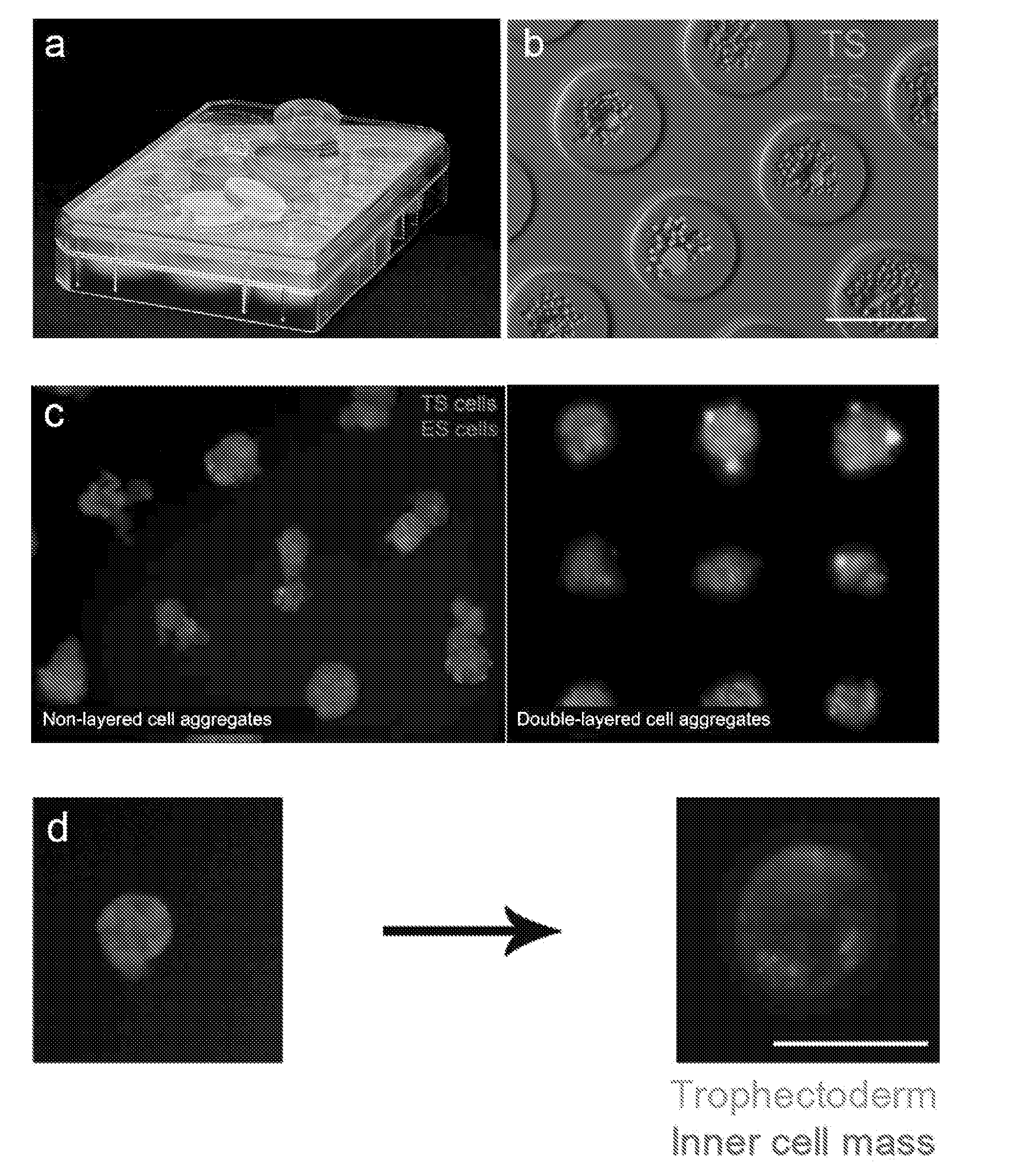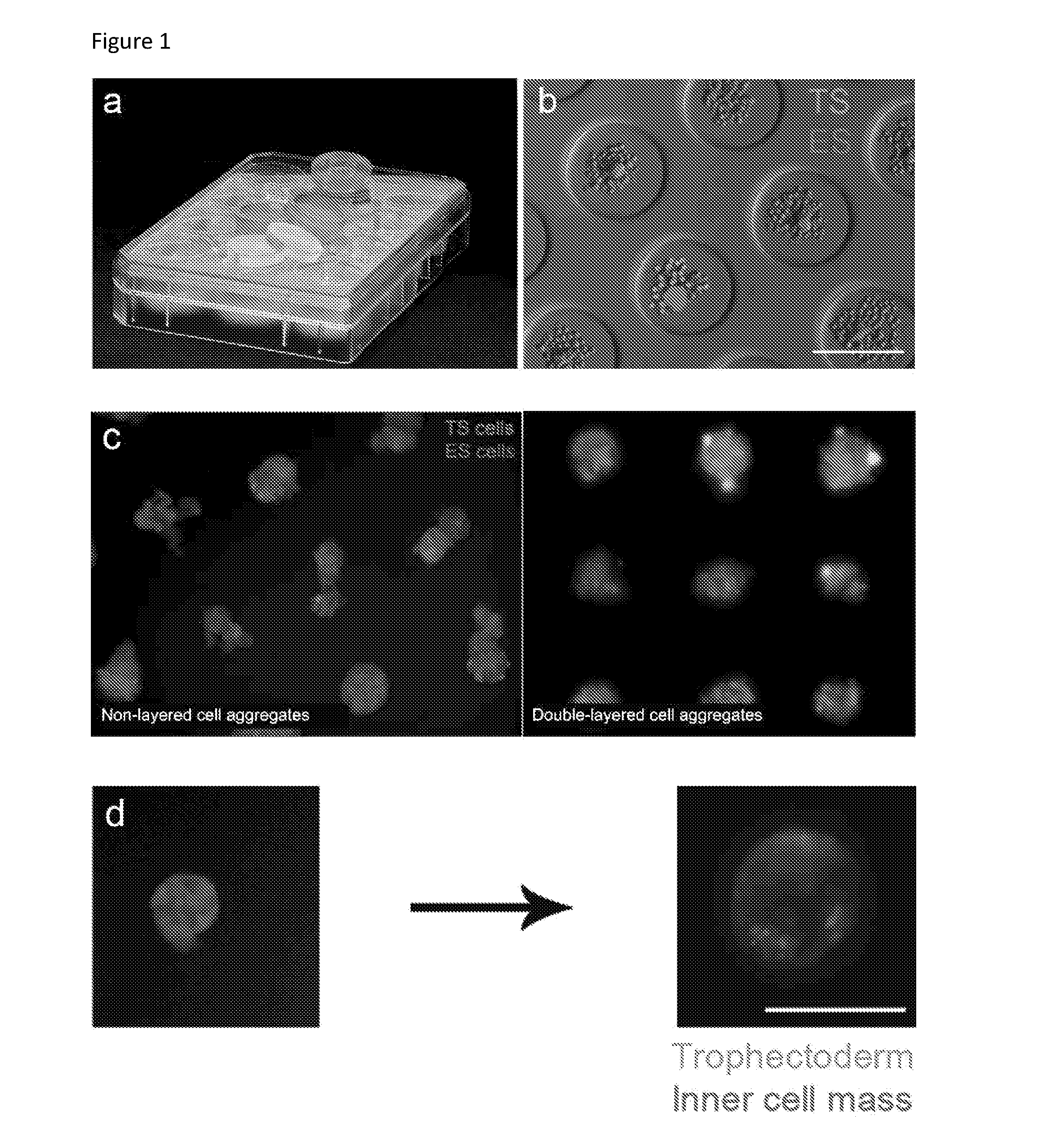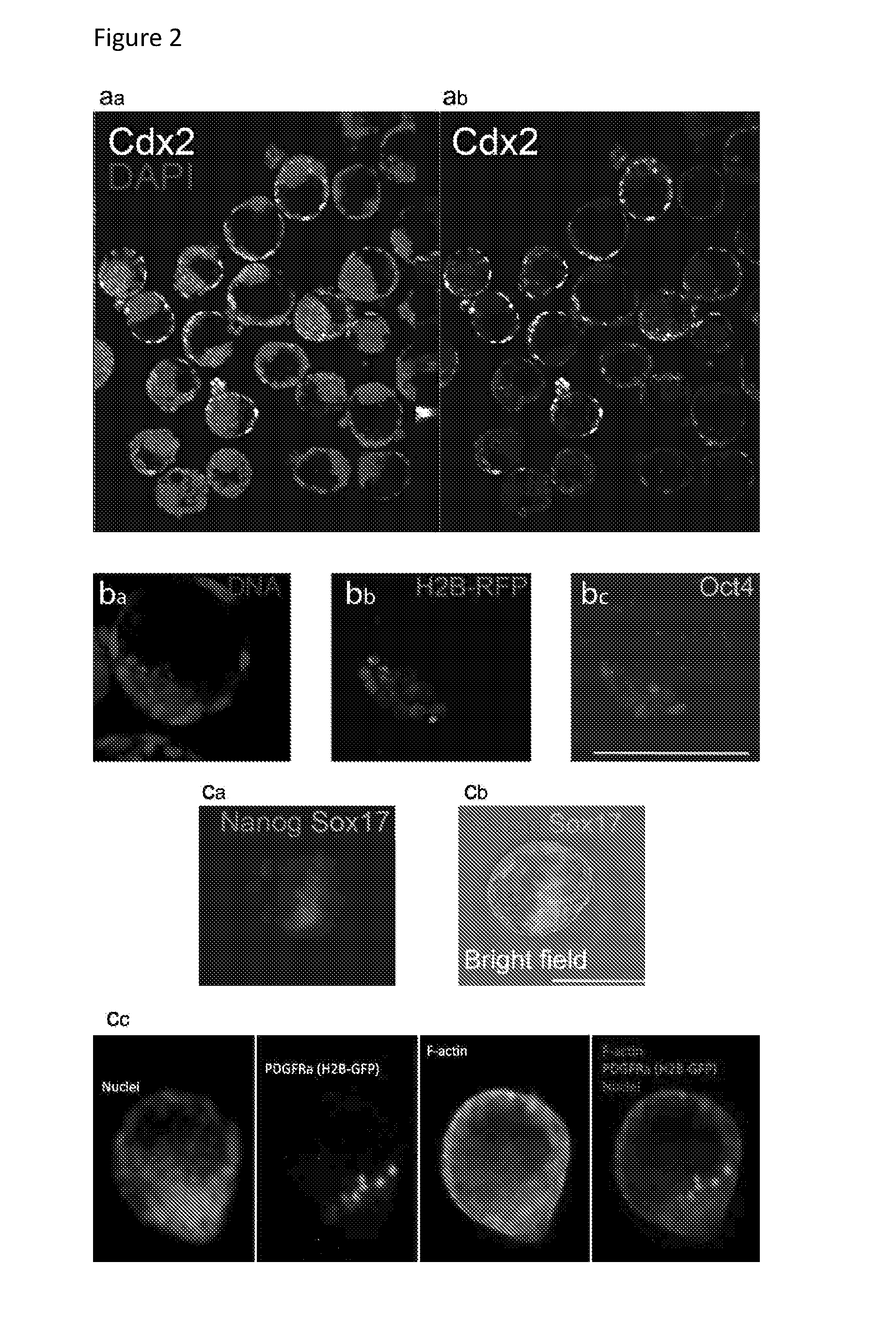Blastoid, cell line based artificial blastocyst
a cell line and blastocyst technology, applied in the field of life sciences, can solve the problems of not being able to generate large numbers of blastoids by other means, and achieve the effect of reducing the number of blastoids
- Summary
- Abstract
- Description
- Claims
- Application Information
AI Technical Summary
Benefits of technology
Problems solved by technology
Method used
Image
Examples
example 1
Obtaining a Blastoid
Day−4
[0331]Mouse embryonic fibroblast (EF)-cells were seeded at 15.000 cells / cm2 in tissue-culture polystyrene plates in ES-medium. The cells were allowed to grow for one day in an incubator set at 37° Celsius.
Day −3
[0332]Mouse ES-cells were seeded on the layer of mouse EF at 15.000 cells / cm2 in “2i” medium containing LIF (500 Units / ml). The mouse ES-cells were cultured for two days in an incubator set at 37° Celsius.
Day −2
[0333]Mouse TS-cells were seeded on a layer of mouse EF-cells at a density of 10000 cells / cm2 in TS-medium in an incubator set at 37 Celsius degrees.
Day −1
[0334]Mouse ES-cells were trypsinized, and the mouse EF-cells were depleted by incubating 2×20 minutes in one 15 cm dish using 4 ml of ES medium.
[0335]Mouse ES-cells were seeded at 7 cells / microwell in 150 μL ES medium. The ES-cells were allowed to settle for 20 minutes, after which 1 ml of ES medium was added, and the culture was placed in an incubator at 37° Celsius for one day to allow th...
example 2
[0344]Double layer formation: the formation of an (at least) double layered cell aggregate with an external layer of TS cells and an inner layer of ES cells is evaluated using transgenic cell lines. Specifically, ES cells were transfected with Histone 2B and a Red Fluorescent Protein under the control of a cytomegalovirus promoter and clonally derived. The H2B-RFP ES cells are thus constitutively expressing a red fluorescence within their nucleus which allows for their tracking.[0345]TS cells were derived from a mouse constitutively expressing Green Fluorescent Protein (GFP) under the control of a cytomegalovirus promoter in all cells. The GFP TS cells are thus expressing a green fuorescence in their cytoplasma which allows for their tracking.[0346]The formation of a double-layered aggregate is thus assessed by observing a green outer layer of cells and a red inner layer of cells. The efficiency of engulfment is determined as the percentage of green-colored projection a...
PUM
 Login to View More
Login to View More Abstract
Description
Claims
Application Information
 Login to View More
Login to View More - R&D
- Intellectual Property
- Life Sciences
- Materials
- Tech Scout
- Unparalleled Data Quality
- Higher Quality Content
- 60% Fewer Hallucinations
Browse by: Latest US Patents, China's latest patents, Technical Efficacy Thesaurus, Application Domain, Technology Topic, Popular Technical Reports.
© 2025 PatSnap. All rights reserved.Legal|Privacy policy|Modern Slavery Act Transparency Statement|Sitemap|About US| Contact US: help@patsnap.com



